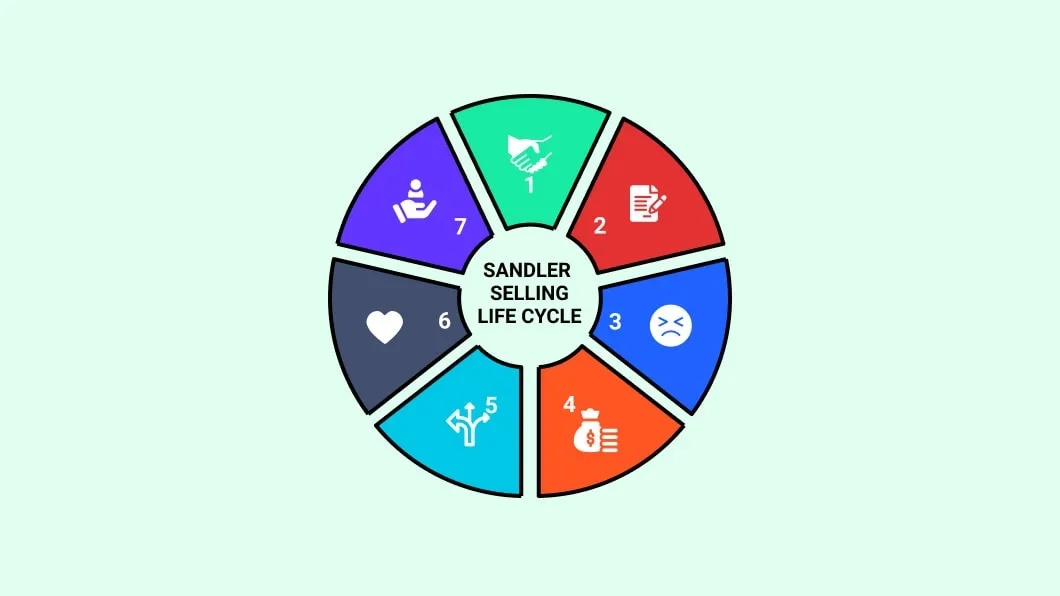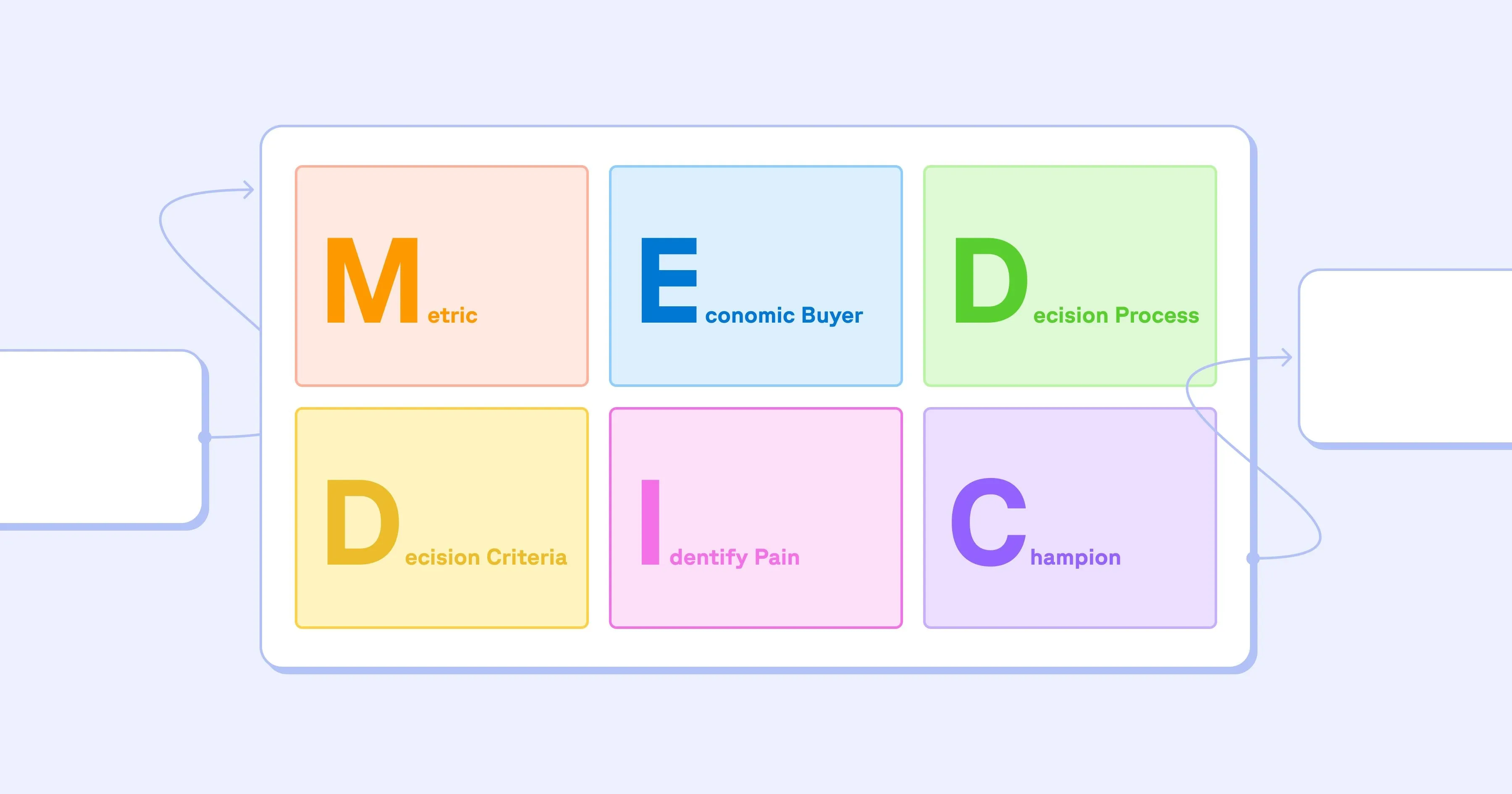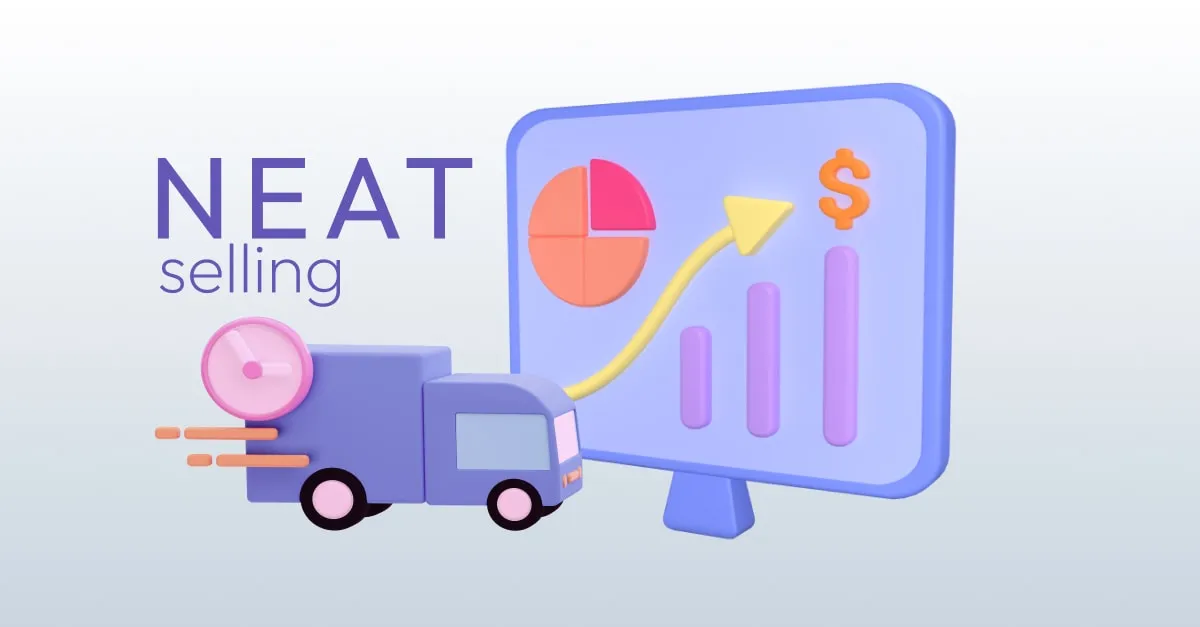What is a Sales Model?

A sales model is a plan or method used by a company to sell its products or services. It helps a business understand how to reach potential buyers and turn them into customers.
Different sales organizations structure their sales models to effectively navigate the complexities of the sales process and address prospects' needs.
A good sales model can help a company grow and succeed. It defines your sales activities and shows you the best ways to talk to customers. This model can help your sales team know what to do and when to do it.
The marketing department plays a crucial role in shaping the sales model and ensuring cohesion between sales and marketing efforts.
According to Hubspot, 72% of a company’s revenue is typically generated from existing customers, underscoring the importance of customer retention strategies within a sales model.
10 Proven Methodologies for Sales Model
1. The Challenger Sale

The Challenger Sale is a sales model where the sales rep teaches, tailors, and takes control of the sales process. It was introduced by the book "The Challenger Sale" by Matthew Dixon and Brent Adamson.
Why is The Challenger Sale Important?
This method helps sales reps stand out by challenging customers' thinking. It shows the sales team how to provide unique insights and solutions. This approach often leads to higher sales success because it builds trust and shows expertise.
How to Implement The Challenger Sale?
- Teach: Provide new insights to your potential buyers. Share information that helps them see their problems differently.
- Tailor: Customize your message to fit the specific needs of your target account.
- Take Control: Guide the conversation confidently. Don’t be afraid to challenge the customer's existing beliefs.
2. Solution Selling

Solution Selling is a sales model that focuses on the needs of the customer. Instead of just selling a product, the sales rep offers a complete solution to the customer’s problem.
Why is Solution Selling Important?
This method is important because it builds strong relationships with customers. By solving problems, sales reps can turn potential buyers into repeat business. It helps define your company's sales strategy by focusing on long-term customer satisfaction.
How to Implement Solution Selling?
- Understand the Problem: Talk to the customer and find out what their main issues are.
- Develop a Solution: Create a customized solution that addresses these issues.
- Present the Solution: Show the customer how your product or service solves their problem.
- Follow Up: Make sure the solution is working and provide any needed technical assistance
3. Consultative Selling

Consultative Selling is a sales model where the sales rep acts like a consultant. Instead of pushing a product, they focus on understanding the customer’s needs and offering expert advice.
Why is Consultative Selling Important?
This method helps build trust and credibility. Sales reps become valued advisors rather than just sellers. It’s especially useful for complex sales where customers need extensive research and guidance.
How to Implement Consultative Selling?
- Ask Questions: Use the four questions that define your customer's needs and challenges.
- Listen Carefully: Pay attention to what the customer says and understand their pain points.
- Provide Expert Advice: Offer solutions based on your expertise and the customer’s specific needs.
- Build a Relationship: Stay in touch and continue to provide value even after the sale.
4. Sandler Sales System

The Sandler Sales System is a sales model that focuses on building trust between the sales rep and the potential buyer. It encourages open communication and honest discussions.
Why is the Sandler Sales System Important?
This method helps sales reps understand the real needs of potential buyers. It also makes buyers feel comfortable, which can lead to more sales. Using this system, sales reps can avoid wasting time on prospects who are not interested.
How to Implement the Sandler Sales System?
- Build Trust: Start by building a good relationship with the potential buyer.
- Ask Questions: Use questions to understand the buyer's needs and problems.
- Qualify the Buyer: Determine if the buyer is a good fit for your product.
- Address Concerns: Talk about any worries the buyer might have.
- Close the Deal: If the buyer is a good fit, help them decide to buy.
5. MEDDIC

MEDDIC stands for Metrics, Economic buyer, Decision criteria, Decision process, Identify pain, and Champion. It is a sales model used to make sure the sales process is thorough and effective.
Why is MEDDIC Important?
This model helps sales teams focus on the most important parts of the sales process. It ensures that sales reps understand the buyer’s needs and how their product can help. This leads to more successful sales and better customer satisfaction.
How to Implement MEDDIC?
- Metrics: Find out what numbers matter to the buyer (like cost savings or increased revenue).
- Economic Buyer: Identify who in the company can make the final decision to buy.
- Decision Criteria: Learn what factors the buyer will consider when making their decision.
- Decision Process: Understand how the buyer makes decisions.
- Identify Pain: Find out what problems the buyer is facing.
- Champion: Find someone in the buyer’s company who supports your product and can help you make the sale.
6. NEAT Selling

NEAT stands for Needs, Economic impact, Access to authority, and Timeline. This sales model helps sales reps focus on the most important aspects of the sales process.
Why is NEAT Selling Important?
This method ensures that sales reps are meeting the buyer's needs and addressing important factors like budget and decision-making. It helps sales reps close deals faster and more effectively.
How to Implement NEAT Selling?
- Needs: Understand the buyer’s needs and problems.
- Economic Impact: Show how your product can save money or increase revenue.
- Access to Authority: Make sure you are talking to someone who can make the buying decision.
- Timeline: Know the buyer’s timeline for making a decision.
7. Target Account Selling

Target Account Selling is a sales model where you focus on specific companies. These companies are called “target accounts.” You spend your time and resources to win these big clients.
Why is Target Account Selling Important?
This method helps you get big deals. By focusing on key accounts, you can create strong relationships and increase your sales. It’s very effective for B2B companies.
How to Implement Target Account Selling?
- Identify Target Accounts: Make a list of companies that would be great customers. You should always identify a target account or multiple potential buyers before planning your sales strategy.
- Research: Do extensive research to understand their needs.
- Personalize Your Approach: Customize your sales pitch for each target account.
- Engage Multiple Stakeholders: Talk to many people in the company, not just one. Engaging multiple stakeholders within a target account can enhance the chances of success.
- Follow Up: Keep in touch with these accounts regularly.
8. Value Selling

Value Selling is a sales model that focuses on the value your product brings to the customer. Instead of just talking about features, you show how your product solves their problems and improves their business.
Why is Value Selling Important?
This method helps you stand out. Customers are more likely to buy if they see clear benefits. It builds trust and shows that you care about their success.
How to Implement Value Selling?
- Understand Customer Needs: Talk to your potential buyers to find out what they need.
- Highlight Benefits: Show how your product solves their problems and adds value.
- Use Data: Provide statistics and examples to support your claims.
- Build Trust: Be honest and focus on helping the customer.
- Follow Up: Check in to make sure they are happy with your product.
9. Inbound Sales

Inbound Sales is a sales model where customers come to you. You attract them with helpful content like blogs, videos, and social media. It’s about creating value and being there when they are ready to buy.
Why is Inbound Sales Important?
This method attracts customers who are already interested in your product. It reduces the time and effort needed to make a sale. It also builds trust and long-term relationships.
Inbound sales reps play a crucial role in engaging with prospects who have interacted with marketing content and in qualifying leads generated from various online channels.
How to Implement Inbound Sales?
- Create Valuable Content: Write blogs, make videos, and share on social media.
- SEO Optimization: Make sure your content is easy to find on search engines.
- Engage on Social Media: Be active on platforms where your customers are.
- Respond Quickly: When potential buyers reach out, answer their questions fast.
- Nurture Leads: Keep in touch with useful information until they are ready to buy.
10. Outbound Sales

Outbound Sales is a sales model where you reach out to potential customers. This can include cold calling, sending emails, or meeting in person. It's about finding and engaging customers directly.
Why is Outbound Sales Important?
This method helps you find new customers and grow your business. It’s proactive and can quickly generate leads. It also allows you to target specific groups of potential buyers.
How to Implement Outbound Sales?
- Build a List of Leads: Create a list of potential buyers to contact.
- Cold Calling: Call these leads to introduce your product.
- Email Campaigns: Send personalized emails to your leads.
- Follow Up: Keep in touch with leads who show interest.
- Track Results: Measure the success of your efforts and adjust as needed.
How to Define Your Company's Sales Model in 5 Steps

1. Identify Target Account and Potential Buyers
Identifying target accounts and potential buyers means figuring out which companies or people are most likely to need your product. These are the ones you should focus on selling to.
Why is it Important?
It’s important because it helps you use your time and resources wisely. By focusing on the right people, you can increase your chances of making sales. This step is crucial in defining your company’s sales model.
Account-based sales (ABS) focuses on targeting specific accounts and key decision-makers, leading to more effective sales strategies.
How to Implement It?
- Research: Look for companies or people who need your product. Check online, in industry reports, or through social media.
- Make a List: Write down the names of these potential buyers.
- Qualify Leads: Decide which ones are most likely to buy. Look at their size, needs, and buying power.
- Segment Your List: Group similar buyers together. This helps in personalizing your approach.
2. Define Sales Activities
Sales activities are the tasks your sales team does to sell your product. This includes making calls, sending emails, meeting clients, and more.
Why is it Important?
Defining sales activities helps your sales team know exactly what to do and when to do it. This makes the sales process smoother and more efficient. It’s a key part of your company's sales model.
How to Implement It?
- List Key Activities: Write down all the tasks your sales team should do. This might include cold calling, emailing, and attending meetings.
- Create a Schedule: Plan when these tasks should be done. For example, make calls in the morning and send emails in the afternoon.
- Set Goals: Decide what you want to achieve with each activity. For instance, set a target for the number of calls made each day.
- Track Progress: Keep track of how well your sales team is doing. Use tools like spreadsheets or sales software.
- Adjust as Needed: If something isn’t working, change your approach. Maybe switch the times you make calls or try a different email strategy.
3. Choose the Right Sales Methodologies
Choosing the right sales methodologies means selecting the best strategies for your sales team to use. Different methodologies can help you connect with potential buyers in various ways.
Why is it Important?
It’s important because using the right method can increase your chances of making sales. Each sales model has different strengths. By choosing the right one, you can match your sales activities to what your potential buyers need.
How to Implement It?
- Research: Look at different sales models like Solution Selling, SPIN Selling, or the Challenger Sale.
- Evaluate: Think about your company's sales goals and which methods align with them.
- Select: Choose one or two methodologies that fit your company's sales model best.
- Train Your Team: Teach your sales team how to use these methods effectively.
- Monitor and Adjust: Keep track of what works and make changes if needed.
4. Leverage Technology and Content Marketing
Leveraging technology and content marketing means using digital tools and online content to help your sales team. This can include software, social media, blogs, and more.
Why is it Important?
This is important because it helps you reach more potential buyers and make your sales process more efficient. Technology can automate tasks and content marketing can attract and educate potential buyers.
How to Implement It?
- Use CRM Software: Customer Relationship Management (CRM) software helps you keep track of your interactions with potential buyers.
- Create Valuable Content: Write blogs, make videos, and post on social media to attract potential buyers.
- Use Email Marketing: Send newsletters and follow-up emails to stay in touch with potential buyers.
- Analyze Data: Use tools to track how well your content is doing and where your sales leads are coming from.
- Adjust Your Strategy: Change your approach based on what the data shows. Focus on what works best.
5. Evaluate and Adapt
Evaluating and adapting means checking how well your sales model is working and making changes if needed. It helps ensure that your sales team stays effective and meets your goals.
Why is it Important?
It’s important because the market and customer needs can change. Regularly checking your sales process helps you stay ahead. Adapting ensures your company's sales model remains successful and relevant.
How to Implement It?
- Collect Data: Track your sales activities and results. Use tools like CRM software to gather data on your sales team’s performance.
- Analyze Performance: Look at the data to see what is working and what isn’t. Check key metrics like sales numbers, customer feedback, and sales rep performance.
- Get Feedback: Talk to your sales team and ask for their input. They can provide insights into what’s working well and what challenges they face.
- Identify Areas for Improvement: Find out where you can make changes. This could be in your sales activities, strategies, or tools.
- Make Adjustments: Implement the necessary changes. This might include training for your sales reps, updating your sales process, or adopting new sales strategies.
6 Sales Process Tip to Improve Your Sales Modal Strategy

1. Optimize Your Sales Processes
Sales processes are the steps your sales team follows to turn potential buyers into customers. Optimizing these steps makes them more efficient and effective.
Optimizing sales processes can save time and increase sales. It helps your sales reps work smarter, not harder.
Here's how to do it:
- Analyze Current Processes: Look at how your sales reps currently work. Identify any steps that take too long or don’t add value.
- Use Data: Collect data on sales activities and results. This helps you understand what works and what doesn’t.
- Make Improvements: Simplify steps, remove unnecessary ones, and automate where possible. For example, use CRM tools to track sales activities and manage customer relationships.
2. Train and Empower Your Sales Reps
raining your sales reps means teaching them the skills and knowledge they need to sell effectively. Empowering them means giving them the tools and confidence to use these skills.
Well-trained and confident sales reps are more effective. They can handle objections, close deals, and build better relationships with customers.
Here's how to do it:
- Regular Training Sessions: Hold regular training sessions to teach new skills and refresh old ones. Topics can include handling objections, understanding the product, and improving communication skills.
- Provide Resources: Give your sales reps access to resources like sales scripts, product information, and customer data.
- Encourage Feedback: Ask your sales reps for feedback on their training and tools. Use this feedback to make improvements.
3. Focus on Customer Retention
Customer retention is about keeping your existing customers happy and encouraging them to keep buying from you.
It’s often cheaper and easier to keep existing customers than to find new ones. Happy customers are also more likely to recommend your company to others.
Here's how to do it:
- Build Relationships: Train your sales reps to build strong relationships with customers. This includes following up after a sale and being responsive to customer needs.
- Offer Excellent Customer Service: Make sure your customer service team is well-trained and equipped to handle any issues that arise.
- Reward Loyalty: Create a loyalty program to reward repeat customers. This could include discounts, special offers, or early access to new products.
4. Incorporate Inbound and Outbound Sales Tactics
Inbound sales involve attracting customers to your company through content marketing, social media, and SEO. Outbound sales involve reaching out to potential buyers through cold calling, emails, and direct marketing.
Using both tactics helps you reach a wider audience. Inbound sales attract interested customers, while outbound sales help you find new clients.
Here's how to do it:
- Create Engaging Content: Write blog posts, make videos, and use social media to attract potential buyers.
- Train Your Sales Team: Teach your sales reps how to effectively reach out to potential buyers through emails and calls.
- Measure Results: Use tools to track which tactics bring in the most leads and adjust your strategy accordingly.
5. Develop a Comprehensive Sales Strategy
A sales strategy is a plan that outlines how your sales team will achieve its goals. It includes target accounts, sales activities, and specific tactics.
A clear sales strategy helps your sales team stay focused and work towards common goals. It defines your company's sales efforts and ensures everyone is on the same page.
Here's how to do it:
- Set Clear Goals: Define what you want to achieve, such as increasing sales by a certain percentage.
- Identify Target Accounts: Determine which customers to focus on and tailor your approach to their needs.
- Plan Sales Activities: Outline the steps your sales team will take to reach these goals, such as making a certain number of calls per day.
6. Enhance Customer Nurturing and Repeat Sales Efforts
Customer nurturing involves building and maintaining relationships with your existing customers. Repeat sales are when customers come back to buy more.
Keeping existing customers is often easier and cheaper than finding new ones. Happy customers are more likely to make repeat purchases and recommend your company to others.
Here's how to do it:
- Follow Up Regularly: Check in with your customers after a sale to see how they are doing and if they need anything else.
- Provide Excellent Customer Service: Be responsive and helpful to keep your customers satisfied.
- Offer Loyalty Programs: Reward repeat customers with discounts or special offers to encourage them to buy again.
Conclusion
Understanding what is a sales model is key to improving your sales strategy. A good sales model helps define your company's sales activities and guides your sales reps. By using the right sales processes and tactics, your sales team can be more effective. Remember to always focus on customer retention and nurturing existing customers for repeat business. Implementing these strategies will lead to better sales success and a stronger sales organization. Keep optimizing your sales model to meet your business goals and stay ahead in the market.





.webp)


